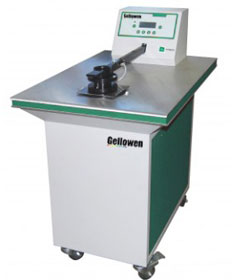
NewsInformation Center
What's the principle of the air permeability tester?
2023/02/08
The air permeability tester is a specialist instrument for testing the permeability of materials with high gas permeability, known as air permeability testing. The air permeability tester is ideal for materials with high gas permeability such as foam, leather, textiles, paper, cardboard and porous ceramics. Air permeability testing is an important tool for monitoring the permeability of these materials in specific areas where it is necessary to quantify the permeability of gases. For example, the air permeability of cigarette paper has a direct impact on the appearance of the cigarette, the smell and the smoke content of the cigarette, while the control of the air permeability of textiles is a key factor in the comfort of clothing.
For the testing of specific gas permeability of materials with certain gas barrier properties, a breathability tester is required to complete the test. Breathability testers are mainly used to test materials with high barrier properties, mostly polymers or multi-layer composites made of polymers, such as plastic films, composite films, aluminised films, aluminium-plastic composite films or paper-plastic composite films.

Fabric permeability: For the determination of fabric permeability, China mainly conducts tests according to the standard "GB/T 5453 Textiles Determination of fabric permeability", which is applicable to a wide range of textile fabrics, including industrial fabrics, non-woven fabrics and other breathable textile products. Air permeability of fabrics, the performance of air through a fabric. Identified by the rate of airflow through a specimen vertically over a specified test area, pressure drop and time. The specific test principle is as described in the standard: the air flow rate through a given area of the specimen is measured vertically over a given period of time under specified differential pressure conditions and the air permeability is calculated. The airflow rate can be measured directly or converted by measuring the differential pressure on both sides of the flow aperture.
Paper permeability: Paper permeability can generally be tested using the air permeability tester of the Gehrig method testing principle. Permeability is the average air flow through a unit area of paper and cardboard under the specified conditions, per unit time and per unit pressure difference, expressed in microns / (pascal-sec).
What's the principle of the air permeability tester?
There are two main methods of air permeability testing, constant differential pressure for flow and constant differential pressure for flow. The constant differential pressure method involves maintaining a constant pressure difference between the two sides of the specimen and calculating the air permeability of the specimen by measuring the air flow through a given area of the specimen over a given period of time; the constant differential pressure method involves maintaining a constant flow of air perpendicular to the specimen and calculating the air permeability of the specimen by measuring the pressure difference between the two sides of the specimen under these conditions. In this paper, the constant differential pressure flow measurement method is used for the testing process.
Previous: Bursting Strength tester Industry Analysis - Global and Chinese Analysis Report
N e x t : What is the filtration principle of a medical mask?



